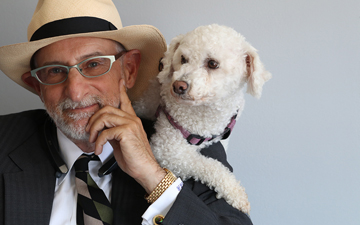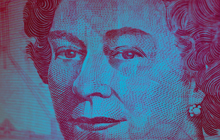CEWS forms for COVID-19 relief will lead to tax fraud, fuel cash economy

Those who don’t remember tax history are doomed to repeat it, says David Rotfleisch
TORONTO – The Canadian Emergency Wage Subsidy (CEWS) is a laudable incentive to provide money to employers to help their employees keep their jobs and avoid collecting employment insurance benefits (EI) during COVID-19.
But CEWS is severely flawed in execution. What went wrong?
We were in such a rush to get money into people’s hands, fast. Important, simple, and easily verifiable information was not asked for on the CEWS application forms.
What are the likely consequences of giving away taxpayers’ money without financial controls?
I believe CEWS opens the door to tax fraud. At the same time, it will feed the underground economy.
End result? Canadian taxpayers paying for this program, likely through tax increases, will be out-of-pocket hundreds of millions or even billions of dollars.
What the CEWS application form is missing
The main eligibility criterion for the CEWS is a revenue reduction of 15 per cent for March to April 2020 compared to March to April 2019. For subsequent periods, there has to be a 30 per cent revenue reduction compared to the previous year.
So, of course, the application form should have asked for the revenue amounts for the current month, and for the comparable month last year, so that eligibility is obvious and the revenue amounts claimed will be subject to easy audit.
Furthermore, the application form should have included total wages paid and number of employees for previous months, so that it is obvious that the amount claimed as current payroll and upon which the subsidy is being claimed, is reasonable and in line with previous periods.
The form should have required every business to compute the revenue reduction to determine their eligibility. Basic wage information should have been compiled with every paycheque so that source deductions can be remitted, so it is readily available as well.
The CEWS application form asked for none of this! Instead, you submit the form, indicating how much your business paid in wages, and how much you are claiming as a subsidy.
When it introduced the CEWS, the government made a point of mentioning that there are anti-avoidance rules and a 25 per cent penalty.
But here’s the thing: when the Canada Revenue Agency starts auditing these grants, they will try to recoup the amounts paid to fraudsters, many of whom will be out of business and perhaps untraceable.
Those companies that are still operating will be subject to a 25 per cent penalty if the CRA can prove that they wilfully gamed the system.
And, as tax lawyers, we will represent those taxpayers and vigorously defend them, some no doubt successfully. A handful of others will, probably, go to jail.
Here’s how the underground economy will take advantage
For businesses that participate in the “underground” cash economy, the revenues they previously reported would be, of course, lower than they would have been if they had followed the tax laws instead of dealing under the table. Showing the necessary 15 or 30 per cent revenue reduction compared to last year becomes more difficult.
But tax evaders of the underground economy who don’t want to submit completely bogus claims have a simple and obvious solution: They will report even fewer sales on the books and do more unreported cash sales.
So, the CEWS ends up providing further incentives to participants in the underground economy to increase, rather than decrease or eliminate, their tax evasion.
Once the economy recovers from the COVID-19 shutdown they may, or may not, increase their reported sales back to previous levels.
I suspect that, once they get used to the increased unreported cash, they will become addicted to it and will continue to leave the new larger portion off the books.
The tax revenue risk of no controls
This is not the first time that the government has dispensed money to taxpayers with effectively no controls. The Scientific Research Tax Credit (SRTC) program allowed outside investors to claim tax credits for investments made into companies that were purportedly carrying on scientific research.
I remember reading the details when the program was first announced and immediately thinking that the program would be subject to massive abuse. There was no control over the use of the funds invested and over $1.6 billion in tax relief was provided to outside investors between 1983 and 1985. When it became clear to the government that funds were not in fact being used for scientific research but rather tax fraud, the government scrapped it.
When the GST program was first introduced there was similar fraud. Taxpayers who claimed refunds were sent cheques with no verification of the claims whatsoever. Subsequent tax audits revealed massive tax fraud and, in many cases, the government was unable to recover improper payments since the payees were long gone.
What’s that saying? Those who don’t remember history are doomed to repeat it.
David J. Rotfleisch, CPA, JD is the founding tax lawyer of Rotfleisch & Samulovitch P.C., a Toronto-based boutique tax law firm and is a Certified Specialist in Taxation Law. He appears regularly in print, radio and TV and blogs extensively. With over 30 years of experience as both a lawyer and chartered professional accountant, he has helped start-up businesses, resident and non-resident business owners and corporations with their tax planning, with will and estate planning, voluntary disclosures and tax dispute resolution including tax litigation. Visit www.Taxpage.com and email David at david@taxpage.com.







(0) Comments